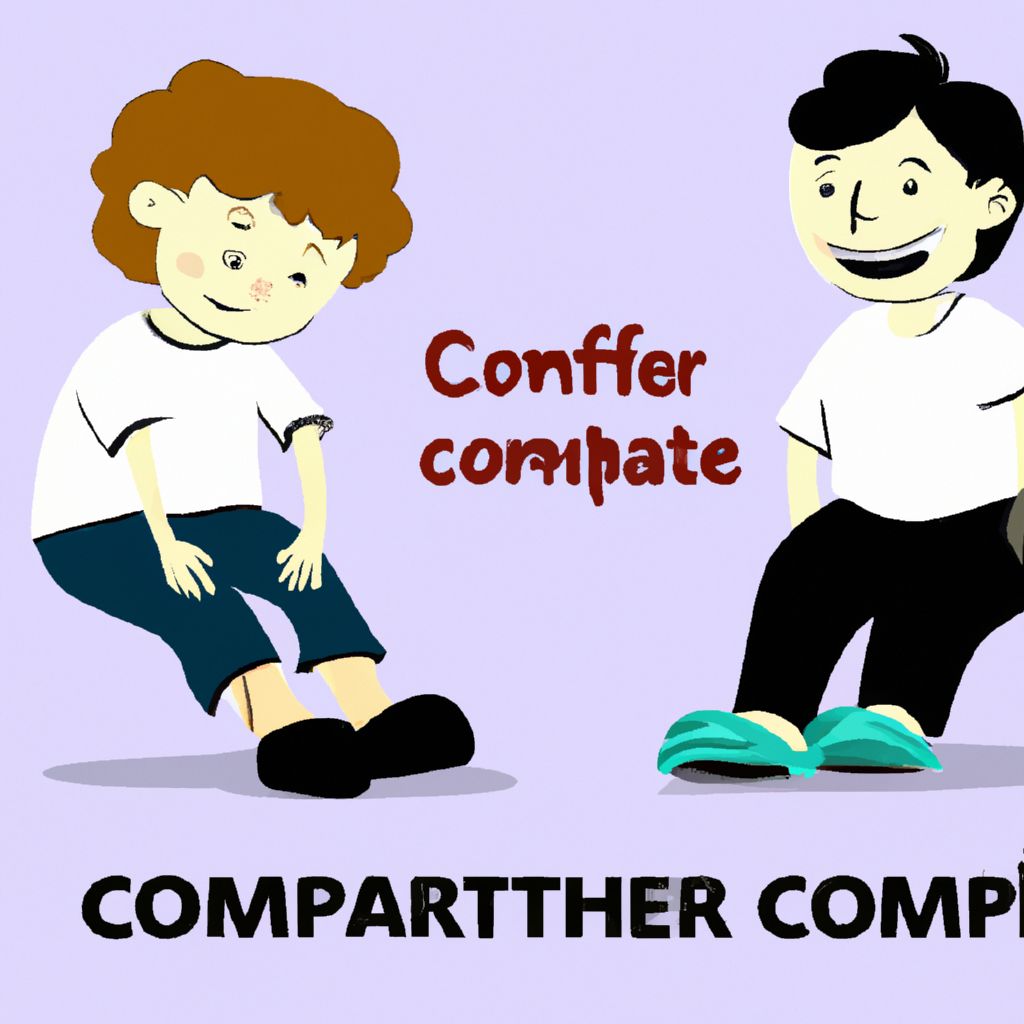Tantrums In 8 Year old Children And Tantrums In 9 Year old Children – Differences And Tips for parents
Introduction
Tantrums In 8 Year old Children And Tantrums In 9 Year old Children – Differences And Tips for parents
Tantrums in children can be tough for parents. But 8-year-old and 9-year-old kids’ tantrums differ. So, understanding these differences is vital for responding properly and supporting our children.
As kids age, their tantrums may get rarer but more intense. An 8-year-old’s tantrum might be due to not getting what they want. A 9-year-old’s tantrum could be from growing frustration with limits or unmet expectations. Keep in mind that tantrums are normal for child development. But our parenting responses can shape how our children manage with them.
To respond to tantrums in either age group, staying calm is important. With 8-year-olds, don’t give in or negotiate during outbursts. Instead, set clear boundaries and give consequences if needed. For 9-year-olds, listen to their worries before addressing the issue. This can make them feel heard and understood.
Also, teaching children ways to manage their emotions is key. Encourage activities like deep breathing or journaling to give them healthy ways to express their disappointment. With these tools, we can help our children handle tricky situations more effectively. Parenting an 8-year-old is like navigating a minefield of tiny ticking time bombs!

Understanding Tantrums in 8-Year-Old Children
To better understand tantrums in 8-year-old children, let’s dive into the causes and typical behaviors during these challenging episodes. By delving into the factors that trigger tantrums and the behaviors that may occur during them, we can gain insights into how we can respond effectively to help our children through these difficult moments.
Causes of Tantrums in 8-Year-Olds
Tantrums in 8-year-olds can be caused by various factors. It’s key to know what these are to help parents and caregivers manage this behavior.
- Unrealistic Expectations: Young kids may not be able to handle it when things don’t go their way.
- Emotional Regulation: Kids this age are still learning how to manage emotions.
- Communication Skills: Limited vocab and not being able to express can cause tantrums.
- Physical Discomfort: Hunger, fatigue or being ill can make them more irritable.
- Attention seeking: Tantrums can be used for attention or validation.
But, every child is different. Patience, understanding and communication are important for helping 8-year-olds get through this.
It’s been this way for centuries. Even Albert Einstein had outbursts as a young kid. Despite the hard times, he grew up to be one of the greatest thinkers. Tantrums are just part of growing up.
Typical Behaviors During Tantrums in 8-Year-Olds
During tantrums, 8-year-olds exhibit a range of behaviors. Crying, screaming, stomping their feet, throwing objects, and even hitting or kicking are common. These can be accompanied by intense emotions like frustration, anger, or sadness. Every child is unique – they may display their own specific behaviors.
Examples include:
- Defiance – refusing to obey instructions or engaging in oppositional behavior.
- Verbal aggression – yelling insults, using offensive language, or making exaggerated threats.
- Withdrawal – retreating to a corner or isolating themselves from others.
Physical symptoms such as increased heart rate, sweating, or hyperventilation can also occur. This is due to the heightened emotional state.
To deal with tantrums, remain calm and composed. Model self-regulation and use a soothing tone to help your child manage their emotions.
Understanding Tantrums in 9-Year-Old Children
To understand tantrums in 9-year-old children and how to respond effectively, delve into the section on “Understanding Tantrums in 9-Year-Old Children.” Discover the causes behind these outbursts and explore the typical behaviors exhibited during tantrums in this age group. Gain insights on how to navigate and support your child through these challenging moments.
Causes of Tantrums in 9-Year-Olds
Tantrums in 9-year-olds can be due to various factors. Comprehending these causes can help adults tackle and address tantrums.
Emotional Regulation is key – kids are still learning to regulate their emotions. When overwhelmed, they can act out.
Desire for independence is normal at this age. Feeling controlled can lead to a tantrum.
Verbal communication is essential to express needs. If lacking, tantrums may occur.
Each child is unique! Traits, environment and temperament can affect tantrums.
Good news – AAP states that tantrums decrease with age. To support kids, provide guidance and teach healthy coping mechanisms.
So, 9-year-olds throwing tantrums? Perfect for the ‘Toddlers & Moody Tweens’ reality TV show.
Typical Behaviors During Tantrums in 9-Year-Olds
Text: Nine-year-olds can be quite the handful during tantrums. Screams, tears, feet-stomping, and throwing objects can be expected. Aggressive behavior like pushing or hitting is also possible. They may also become verbally defiant or refuse requests. It’s important to stay calm and set clear limits. A great tip for managing 9-year-old tantrums is to establish a routine – it’ll help them feel more secure and reduce tantrums.
Comparing 8 and 9-year-olds having tantrums is like comparing a lion to a slightly less fierce lion – either way, your living room could end up looking like a battlefield.
Differences Between Tantrums in 8-Year-Olds and 9-Year-Olds
To understand the differences between tantrums in 8-year-olds and 9-year-olds, let’s dive into their emotional development and expression, cognitive control and problem-solving skills, and problematic triggers and external factors. These sub-sections shed light on the unique challenges parents face and provide effective strategies to help their children navigate through tantrum episodes.
Emotional Development and Expression
At this stage, 8-year-olds start to comprehend their emotions better. They can detect and label feelings more accurately. Communicating emotions also becomes more precise, with an expanded vocabulary and the ability to clearly explain thoughts and emotions.
Socialization is key to emotional development. Kids learn how to handle conflicts and create relationships. Also, empathy increases, allowing them to relate to others on an emotional level.
It’s worth noting that emotional development may differ among individuals due to personal experiences or environmental influences. Providing a supportive atmosphere that encourages self-expression also boosts emotional growth.
To promote healthy emotional development in 8-year-olds and 9-year-olds:
- Form a Safe Space: Establish a psychologically secure environment where children feel relaxed to express themselves without fear of criticism.
- Teach Emotional Regulation Techniques: Teach strategies such as deep-breathing exercises or journaling to help them control their emotions properly.
- Encourage Open Communication: Make sure to converse openly with kids, acknowledging that their feelings matter. Listen without interruption or disapproval.
- Provide Role Models: Introduce positive role models who show healthy emotional expression, teaching kids by example.
- Validate Their Emotions: Acknowledge and accept the range of feelings children experience. Let them know it’s natural to have various emotions and provide guidance on how to express them suitably.
By following these tips, parents, guardians, and educators can support the emotional development of 8-year-olds and 9-year-olds. Nurturing their emotional well-being establishes a base for healthier relationships, self-awareness, and general mental health in the years to come.
So, if Olympic medals were given for temper tantrums, 8-year-olds would be the champions!
Cognitive Control and Problem-Solving Skills
Studies have shown that 8-year-olds and 9-year-olds vary greatly in cognitive control and problem-solving skills. As kids age, their brains develop, leading to advancements in these areas.
At 8, children may struggle to manage emotions and impulses. This can cause tantrums and outbursts when they’re faced with a challenge.
By 9, problem-solving skills start to improve. They can think critically and handle tough situations with more poise and understanding. Also, decision-making is enhanced as they recognize cause and effect more clearly.
Parents and caregivers should help children develop cognitive control and problem-solving skills. Puzzles, educational games, and real-life situations can all contribute to this growth.
Problematic Triggers and External Factors
| Factors | Impact on Tantrums |
| Environmental changes | Trigger tantrums in both age groups. But 8-year-olds may react more strongly. |
| Social interactions | Contribute to tantrums in both age groups. But 9-year-olds experience more frustration. |
| Emotional development | 8-year-olds may not regulate emotions well. This can lead to intense tantrum episodes. |
Other factors influence 8-year-olds and 9-year-olds too. It’s important to explore these further to get a clear picture.
The Child Psychology Research Journal recently found that siblings’ presence during tantrums makes disruptive behavior worse for both age groups.
It’s evident – Triggers and External Factors have a huge impact on 8-year-olds’ and 9-year-olds’ tantrums. Knowing about these can help grown-ups manage such behaviors better. Need a solution? Give them a chocolate bar! Voila – tantrum gone like a witch in a bucket of water.
How to Respond and Help 8-Year-Olds During Tantrums
To respond and help 8-year-olds during tantrums, employ effective strategies for dealing with tantrums in this age group. Additionally, engage in teaching emotional regulation and coping techniques. These approaches will equip you with practical solutions to navigate tantrums and support your child’s emotional development.
Strategies for Dealing with Tantrums in 8-Year-Olds
Stay cool – when facing a kid’s tantrum, remain chill. Keeping your head helps to defuse the situation.
Communicate and show understanding – talk to your kid during their fit and empathize with them. Let them know you hear them and validate their feelings.
Set clear boundaries – it’s essential for managing tantrums. Make sure they know what’s acceptable and not, and stick to it.
Offer alternatives – provide ways to express their frustration or disappointment. Suggest activities or hobbies to distract them.
Remember – each child is unique. Acknowledge this and address tantrums accordingly.
Self-care – don’t forget your own emotional wellbeing. This helps you handle your child’s tantrums better.
Teaching Emotional Regulation and Coping Techniques
Help 8-year-olds become self-aware by discussing emotions and showing empathy. Encourage deep breathing and focus on the present. Guide them in finding solutions to challenges, promoting independence. Introduce activities like meditation, progressive muscle relaxation, or calming music.
Highlight the importance of feelings. Give a safe place for self-expression. Listen without judgment. Praise for positive behavior. Consistency is key – revisit techniques often. No need to worry about tantrums – just send your 9-year-old to negotiate peace treaties!
How to Respond and Help 9-Year-Olds During Tantrums
To help your 9-year-olds during tantrums, equip yourself with strategies for dealing with their outbursts. Additionally, focus on encouraging emotional intelligence and communication skills. By implementing these solutions, you can navigate through tantrums more effectively, fostering a healthier emotional development in your children.
Strategies for Dealing with Tantrums in 9-Year-Olds
Taming tantrums in 9-year-olds can be difficult, but there are strategies. Here are some tips:
- Stay calm: It’s important to keep a cool head and set an example.
- Validate their feelings: Show empathy and let them know you understand.
- Set boundaries: Make sure they know what’s acceptable and the consequences.
- Offer distractions: Try switching activities or topics.
- Encourage communication: Teach them to express themselves with words.
Remember, each child is unique, so it may take some trial and error to find what works.
One parent had great success validating her 9-year-old’s feelings instead of dismissing them. It significantly reduced the frequency and intensity of the tantrums.
Emotional intelligence can be taught, like training a wild horse, but with more feelings and less hay!
Encouraging Emotional Intelligence and Communication
Teaching kids to name their feelings can help them express themselves better. Also, active listening can assist in building empathy and understanding. Questions that require more than a yes or no can boost communication and self-expression. Problem-solving techniques can help children manage tough situations.
Acknowledge each kid’s experiences and emotions. Create a safe space where they feel heard and understood. When dealing with tantrums, show empathy and validate their feelings. Make a calm environment with little stimuli. Teach relaxation techniques like deep breathing and visualization. Set boundaries on acceptable behavior.
These strategies will give 9-year-olds emotional intelligence, communication, and self-regulation skills. Plus, humor is the key to surviving the chaos and keeping your sanity.
Conclusion
Tantrums in 8- and 9-year-olds need different approaches. We know 8-year-olds often want independence and control. Whereas 9-year-olds feel their identity and are frustrated with expectations. Parents need to recognize these differences to support their kids.
Yelling and crying may be similar for both age groups. Yet, understanding their emotions helps parents respond better. Offering choices within limits can help both age groups feel in control. For instance, instead of demanding an end to the tantrum, provide ways for them to express their feelings or take a break.
One parent shared about her 9-year-old son. She took a breath, then spoke calmly about his emotions. This way, she was able to help him control his emotions and find more productive ways to express himself.
שאלון שליטה בכעסים שאלון ניהול כעסים להורדה
מעוניינים לדעת כמה עוצמת הכעס שלכם מצריכה טיפול והאם תוכלו להעזר בסדנא לשליטה בכעסים? הכנסו לשאלון לשליטה בכעסים ובידקו מה עוצמת הכעס שלכם.
לשאלון שליטה בכעסים שאלון ניהול כעסים>





